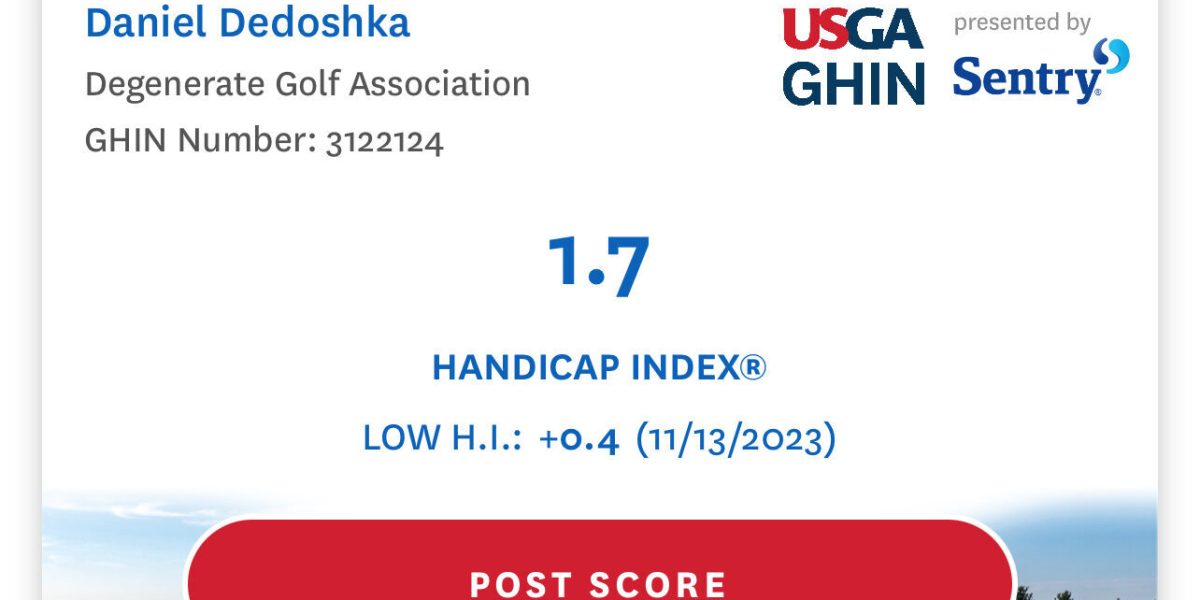
5 THINGS TO KNOW ABOUT ESTABLISHING A HANDICAP INDEX
Whether you’re a seasoned player or new to the game, establishing a handicap index is an essential step in making your golf experience more competitive and enjoyable. A handicap index allows golfers of different skill levels to compete on an even playing field, adding a layer of fairness and challenge to the game. Here are five crucial things you should know about establishing your handicap index.
1. What is a Handicap Index?
A handicap index is a numerical measure of a golfer’s potential ability, calculated based on their scores from previous rounds. It’s designed to reflect a player’s skill level, making it easier to compete with golfers of varying abilities. The lower your handicap index, the better your golf game is considered to be. For example, a golfer with a handicap index of 5 is generally more skilled than someone with a handicap index of 15.
2. How is a Handicap Index Calculated?
The calculation of a handicap index involves taking your best scores and adjusting them based on the difficulty of the courses you’ve played. The USGA (United States Golf Association) formula uses the 8 best scores out of your last 20 rounds, factoring in the Course Rating and Slope Rating of each course. The formula is complex, but the basic idea is to level the playing field by accounting for the varying difficulties of different golf courses.
3. Why Establishing a Handicap Index is Important
Having a handicap index is important for several reasons. First, it allows you to participate in official competitions and tournaments where a valid handicap is required. Second, it gives you a benchmark for measuring your improvement over time. Third, it enables you to play matches with friends and other golfers of different skill levels on a fair basis. Essentially, your handicap index is your golfing identity, and it helps ensure that every game is both competitive and enjoyable.
4. How to Get Started with Your Handicap Index
To establish a handicap index, you’ll need to join a golf club that is part of a recognized golf association, such as the USGA. Many clubs and courses are affiliated with regional golf associations that provide handicap services. Once you’re a member, you’ll need to submit your scorecards regularly. Most systems require at least 5-10 scores to calculate an initial handicap index. Today, many golfers use apps or online platforms to submit scores and track their handicap, making the process more accessible than ever.
5. Maintaining and Improving Your Handicap Index
Your handicap index isn’t set in stone—it fluctuates with your performance. To maintain an accurate handicap, consistently submit your scores after every round. This includes both good and bad rounds, as your handicap index reflects your potential on any given day, not just your best performances. If you’re looking to improve your handicap, focus on specific areas of your game that need work, such as driving accuracy, putting, or course management. Over time, as you improve, your handicap index will adjust to reflect your enhanced skills.
Establishing a handicap index is a vital part of your golfing journey, allowing you to engage more deeply with the sport and challenge yourself against others. Whether you’re aiming to climb the competitive ranks or just enjoy fair play with friends, understanding and maintaining your handicap index will elevate your game. So, if you haven’t established yours yet, now’s the time to start—it’s a key step in becoming a true golfer.